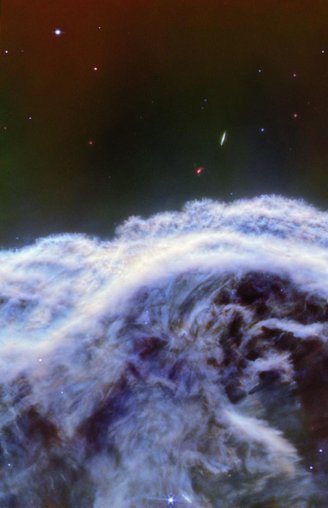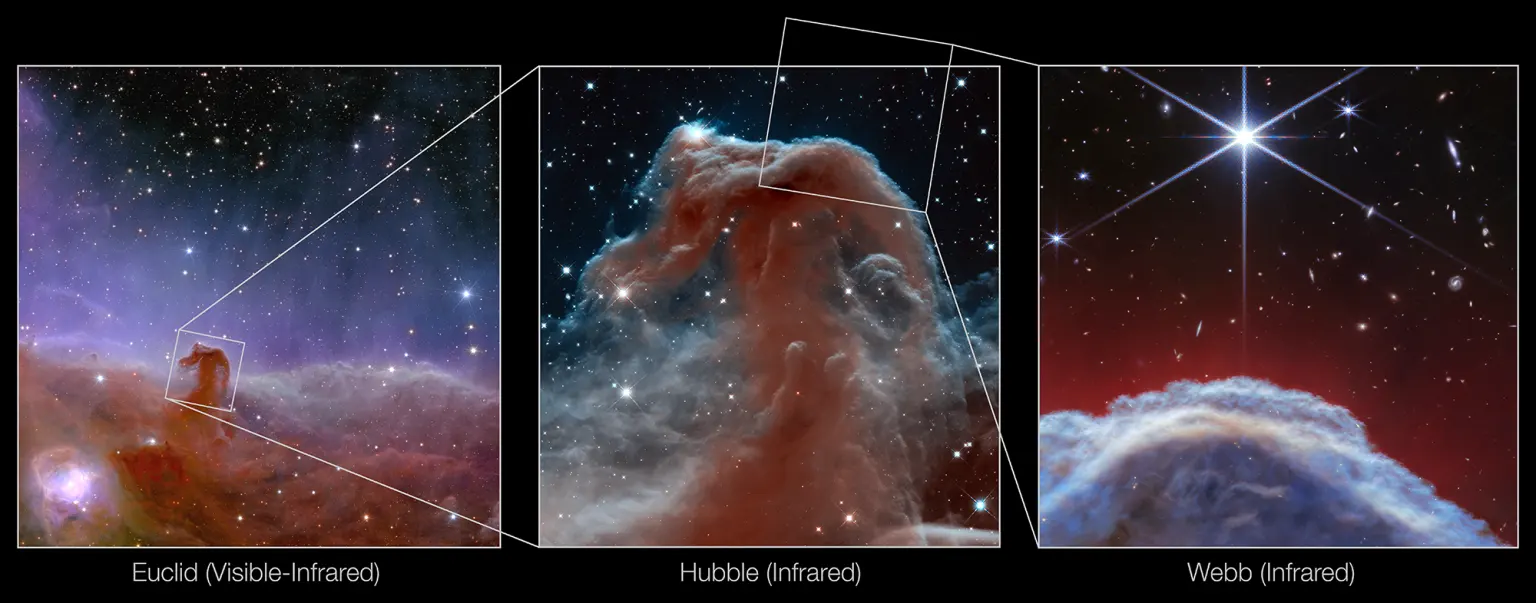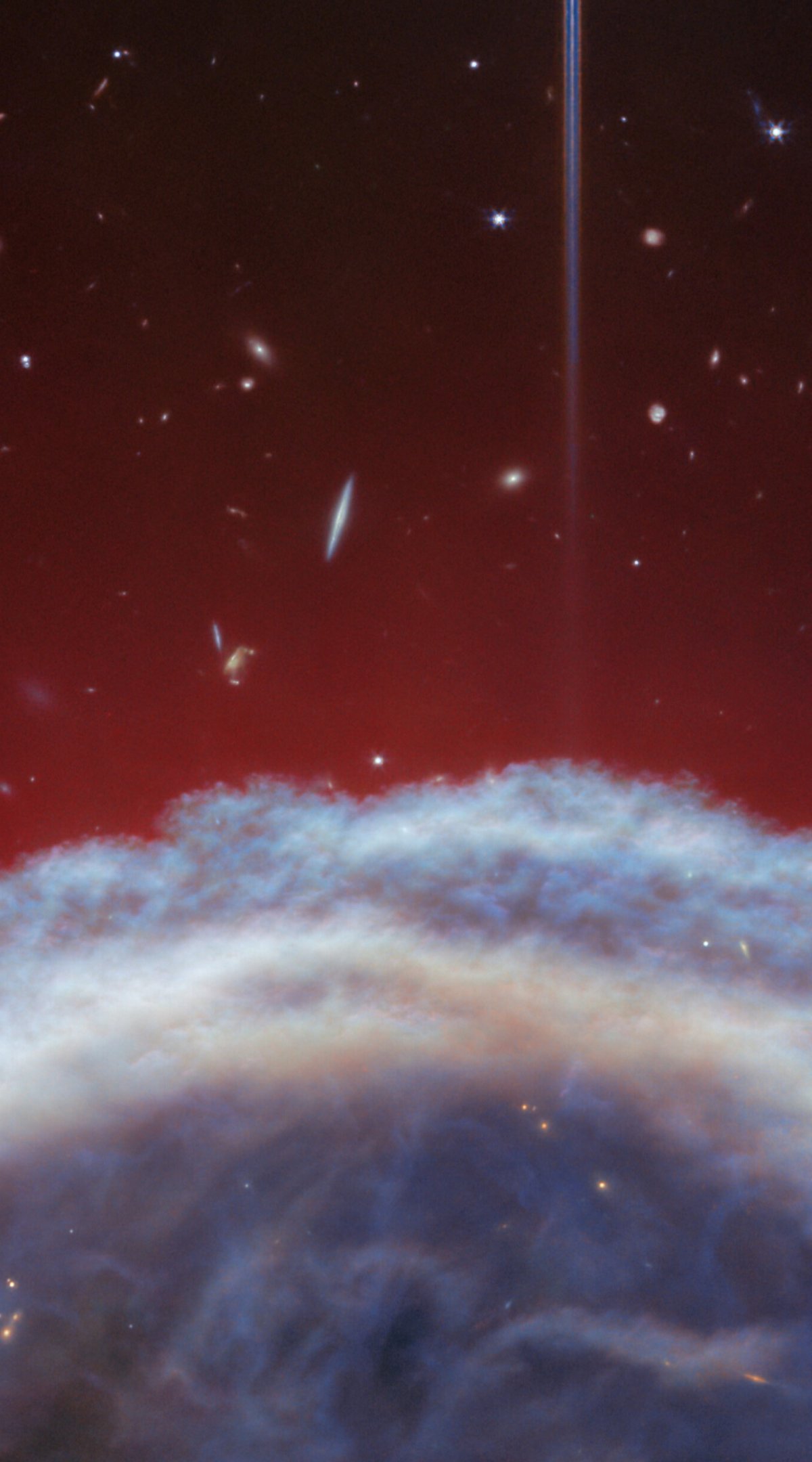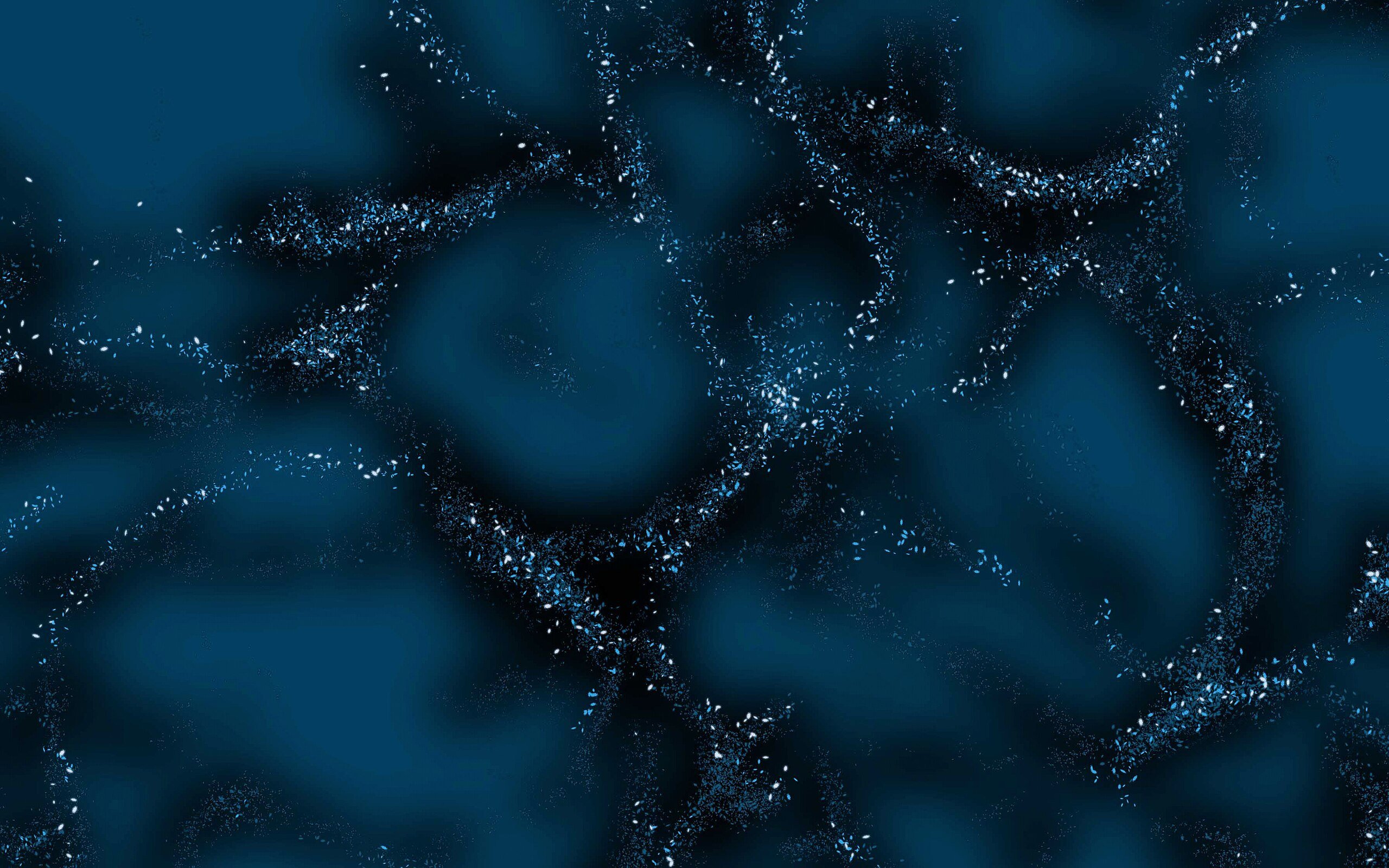The James Webb Space Telescope was recently launched The sharpest infrared images ever recorded of the iconic Horsehead Nebula, A cloud of stellar matter approximately 3 light-years in diameter and 33 light-years long, located approximately 1,500 light-years from Earth.
Considered a more compact object in the context of giant nebulae, the Horsehead stands out not only because of its shape, but also because it is a typical example of PDR, the English abbreviation for Photodissociative Dust Region. It is a stellar nursery in the middle of cosmic clouds, where ultraviolet (UV) radiation from nearby massive stars is absorbed by dust grains.
Although this relationship produces the phenomenon known as photodissociation of molecules, that is, the breakdown of molecular hydrogen (H2), liberating atomic hydrogen to form new stars. This core of dust and gas is so thick and dark that in optical photographs it looks like a hole in the glowing gas around it..
How were James Webb Space Telescope photos taken?
Astronomers used a combination of NIRCam and 23 filters to achieve this incredible resolution, which can track emissions from particles smaller than 10 nanometers. These images usually appear in blue, green and red colors corresponding to near-infrared wavelengths.
image of MIRI

MIRI images taken in mid-infrared focus on cooler, dustier objects. These images, which have lower resolution than NIRCam, reveal finer details such as the temperature and composition of dust and gas.
The significance of new images of the Horsehead Nebula

The importance of a more detailed view of the Horsehead Nebula allows us to analyze the functioning of a stellar nursery. The material forming this “cap” has collapsed under the influence of gravity and is exposed to intense UV radiation from nearby stars. Clearer images will provide a better understanding of photodecomposition.
Another process that can be understood with new visuals Photoevaporation is where solid powder sublimes and turns into gas without passing through the liquid state.. In the context of the Horse Head, this works like a chisel, taking parts of the original “sculpture” and changing its shape over time..
The paper, accepted for publication in the journal Astronomy & Astrophysics, envisions the future development of a detailed model of the evolution of dust in the PDR. A comprehensive analysis of the light will reveal the chemical composition of dust and gas, helping to understand the process of exchange and evaporation, ultimately leading to the release of newborn stars.
Follow the latest news about the James Webb Space Telescope at TecMundo, and also get the opportunity to learn how telescope lenses are contributing to the evolution of astronomy.
Source: Tec Mundo
I’m Blaine Morgan, an experienced journalist and writer with over 8 years of experience in the tech industry. My expertise lies in writing about technology news and trends, covering everything from cutting-edge gadgets to emerging software developments. I’ve written for several leading publications including Gadget Onus where I am an author.












